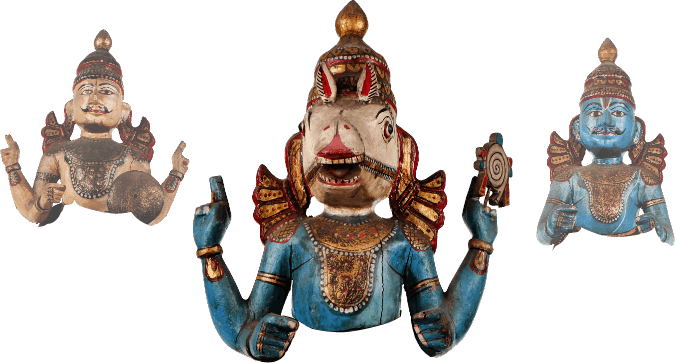There are some ideas that seem like a no-brainer – once someone has thought of them. Sitting at a table at the New Delhi National Crafts Museum & Hastkala Academy’s new outdoor restaurant, Café Lota, which soon fills up with what appear to be silver-haired doyennes of Indian arts and letters and ambitious design school graduates, we couldn’t help but wonder: Why wasn’t this here before?
The Ministry of Textiles, which runs the National Crafts Museum & Hastkala Academy, claims to have had a north Indian food cafeteria at the decades-old institution, which we must admit, we cannot recall at all. But the new spot, which offers contemporary versions of several regional Indian dishes, paired with a wide variety of grains, such as red rice and millet, seems much more in keeping with the museum’s back-to-the-roots ethos.
We can’t pretend to be the first to discover this spot. It opened in October and folks who have paid a visit have praised its version of fish and chips, amaranth-encrusted batter-fried sole with sweet potato fries.
What we liked about the food was that there are many options that seem – amazingly – pretty healthy. What we liked about the setting was everything, including the terra-cotta horse, the passing groups of visiting school children and the All India Radio broadcasts of classical music — so retro.
Opening Hours
Cafe Lota Menu
Why Lota
The inspiration for the name of the new National Crafts Museum & Hastkala Academy Shop is the film Lota1 based on the India Report by Charles and Ray Eames. Made after the renowned 20th century designer Charles Eames, and his wife and partner in design, Ray Eames, visited India in the late 1950s to advise on Design Policy, the film celebrates the design credentials of this classic craft object found in so many variations across India.
In identifying the Lota as an object of excellent design, Eames uses the term ‘Lota' (or Container) as a generic, to signify a variety of objects of differing size and shape, even use, but which share an essential basic form. In discussing the features of the `Lota', diverse aspects of its function and form are examined, and shown to be appropriate and attractive.
So, on function, or those features which affect its proper use
- The optimum amount of liquid to be fetched, carried, poured and stored in a prescribed set of circumstances.
- The size and strength and gender of the hands (if hands) that would manipulate it.
- The way it is to be transported — head, hip, hand, basket or cart.
- The balance, the center of gravity, when empty, when full, its balance when rotated for pouring.
- The fluid dynamics of the problem not only when pouring but when filling and cleaning, and under the complicated motions of head carrying — slow and fast.
- Its sculpture as it fits the palm of the hand, the curve of the hip.
- Its sculpture as compliment to the rhythmic motion of walking or a static post at the well.
- The relation of opening to volume in terms of storage uses — and objects other than liquid.
- The size of the opening and inner contour in terms of cleaning.
- The texture inside and out in terms of cleaning and feeling
- Heat transfer — can it be grasped if the liquid is hot?
- And on form, or those features which affect our visual, aural, tactile senses, and how we 'value' it:
- How pleasant does it feel, eyes closed, eyes open?
- How pleasant does it sound, when it strikes another vessel, is set down on ground or stone, empty or full — or being poured into?
- How will it look as the sun reflects off its surface?
- How does it feel to possess it, to sell it, to give it?
The Lota is seen as an object that is the culmination of a process of evolving, through use, through addition and subtraction, till a solution is reached that could not be improved upon. Eames concludes that such perfection could not be the product of an individual designer but the result of a gradual, organic development, through a communal energy, a "coalescence of many generations of intention3.
Of course, no one man could have possibly designed the Lota. The number of combinations of factors to be considered gets to be astronomical — no one man designed the Lota but many men over many generations. Many individuals represented in their own way through something they may have added or may have removed or through some quality of which they were particularly aware.
Eames thus pays tribute to history and to evolution, to the power of the process whereby small changes over time lead towards a timeless perfection. The factors which need to be considered to achieve such perfection are immeasurable and, as Eames states, those he examines in the analysis of the Lota are but a small set of all possible factors. In invoking the Lota, Eames essentially makes an appeal for the relentless search for quality and a "smell for appropriateness" that will help to discern and tackle those immeasurable factors, and "hasten the production of the Lotas of our time4.
- National Institute of Design, Ahmedabad. We are grateful to National Institute of Design for sharing the film with us.
- The Eames' fascination with Indian craft has even been interpreted recently as a kind of Orientalism,"yet another scene of modernism's insatiable consumption of the non-West". See Saloni Mathur, Charles and Ray Eames in India, Art Journal, Vol. 70, No.1, (Spring 2011).
- Sunil Khilnani, The design manifesto, Live Mint, 23 March 2012.
- All sections in italics are direct quotes from the Eames' India Report.

